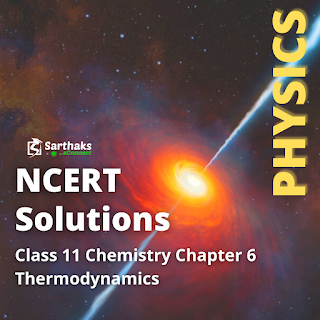NCERT Solutions Class 11 Chemistry Chapter 6 Thermodynamics
Class 11 Chemistry NCERT Solutions Chapter 6 Thermodynamics is an excellent way to learn the solutions to the given chapter's problems. Our NCERT Solutions are solved and prepared by subject matter experts.
Our NCERT Solutions Class 11 contains all of the solutions that students
require. We have provided detailed analysis and solutions for each concept,
such as:
·
Thermodynamics is the scientific study of the
relationship between heat, work, temperature, and energy.
·
Thermodynamic terms - The following are
examples of common thermodynamic terms: Work is the energy required to move or
lift a weight over a unit distance. Temperature is defined as the quantifiable
difference between warm and cold objects.
o
Specific heat is the amount of heat required
to raise the temperature of any substance by one degree Celsius.
o
When two chemicals react, they either give off
heat (exothermic reaction) or require heat (endothermic reaction) (endothermic
reaction).
o
Electrical energy is the energy associated
with electron flow through a conductor.
o
Energy is defined as the ability to perform
any task. Potential energy, kinetic energy, thermal energy, chemical energy,
and nuclear energy are all types of energy.
o
Enthalpy is an energy unit that combines
internal energy with a pressure/volume or flow work term.
o
Entropy is the degree of randomization or
disorder as a property of matter.
o
Heat is the movement of energy caused by a
temperature difference.
o
Internal energy is the activity within the
molecular structure that is typically measured using temperature.
o
Kinetic energy is the energy generated by the
motion of any object.
o
Nuclear energy is the energy contained within
atoms and their fundamental particles. Nuclear energy can be obtained in two
ways. Nuclear fission and nuclear fusion are two different processes.
o
Potential energy is the energy possessed by
any particle as a result of its position, height, or shape.
·
Gibbs Energy Change and Equilibrium - The free
energy change (G) is the difference between the heat released during a process
and the heat released during reversible reactions. G = 0 if the system is in
equilibrium.
Our NCERT Solutions Class 11 Chemistry is one of the best ways to
prepare for important exams such as the CBSE board, and state boards, and
difficult competitive exams such as JEE Mains, JEE Advance, NTSE, and Olympiad.



Comments
Post a Comment